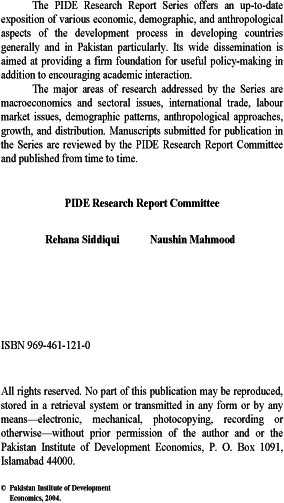Modelling Gender Dimensions of the Impact of Economic Reforms on Time Allocation among Market Work, Household Work, and Leisure
Gender has been largely ignored at the theoretical, empirical and policy design levels, thereby perpetuating gender biases in the actual working of economies, promoting gender inequality and poverty.1 Women and men face different constraints and respond differently to policy change. These constraints emanate from the different ‘traditional’ roles related to women and men as well as discrimination attached to them because of their biological differences. First major factor that determines gender differences in the impact is the division of labour. Females, roughly half of the population of Pakistan, contribute to the economy and fight against poverty through theirs multiple roles at home and in the market. They are heavily involved in household activities, such as food preparation, child rearing, taking care of elderly and farm animals, and fetching water and fuels etc., [Cagatay (1995), Sathar and Kazi (1997), Siddiqui, et al. (2003)]. These activities called ‘social reproductive activities’ occur in non-marketed sphere and are often over looked in policy formulation and in standard macroeconomic models. Thus, from the perspective of the economic planner, household work remains unrecognised and invisible. In addition women are also involved in market activities, although their participation in the market is very low in Pakistan.




